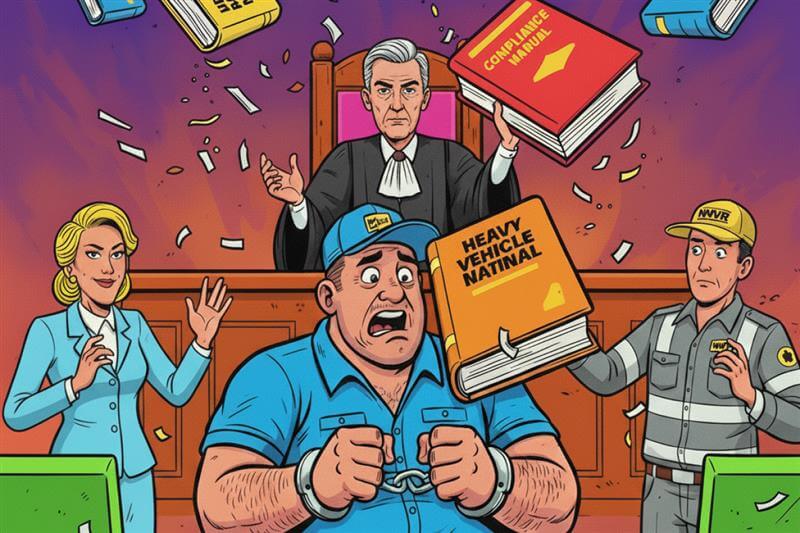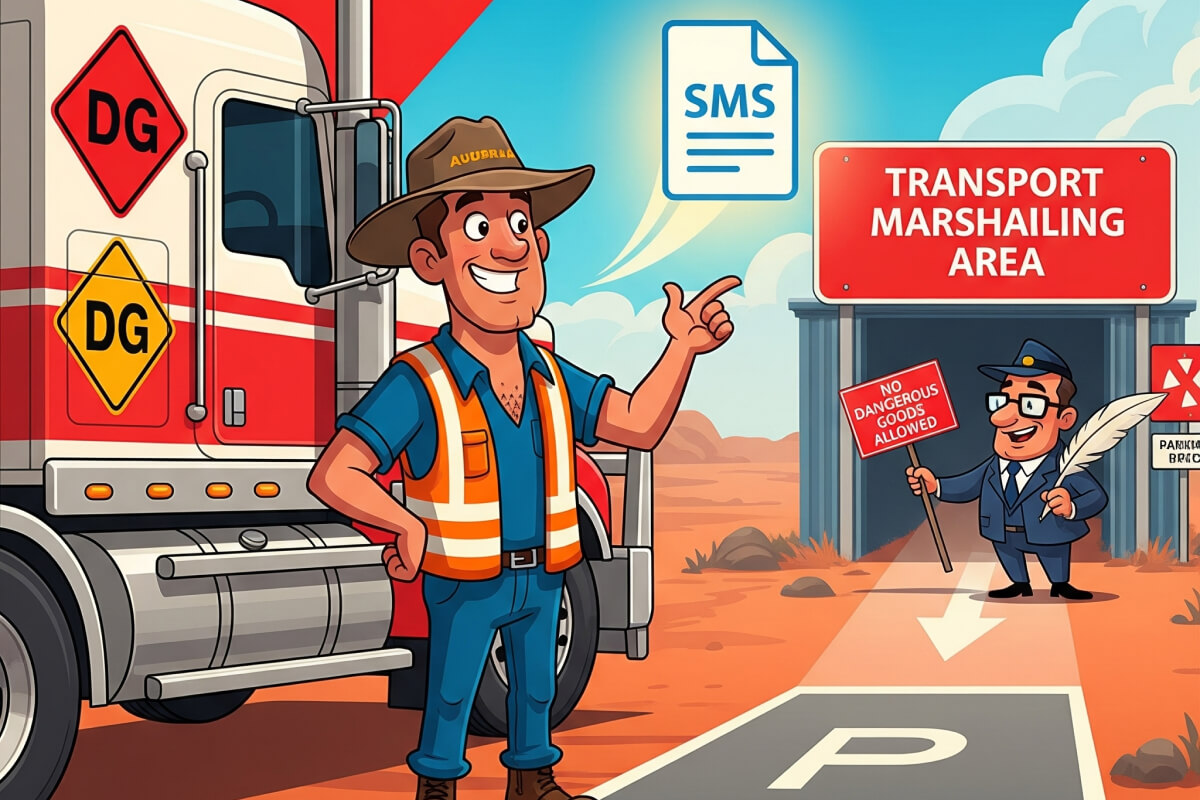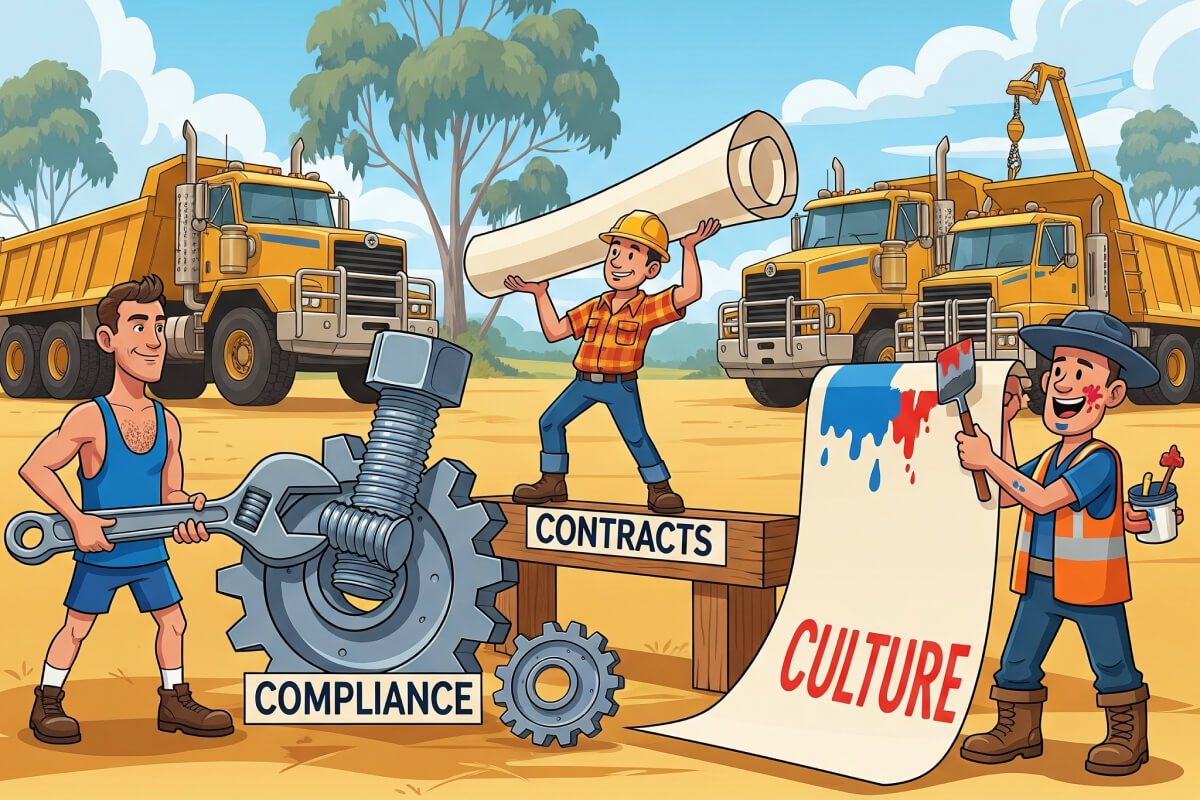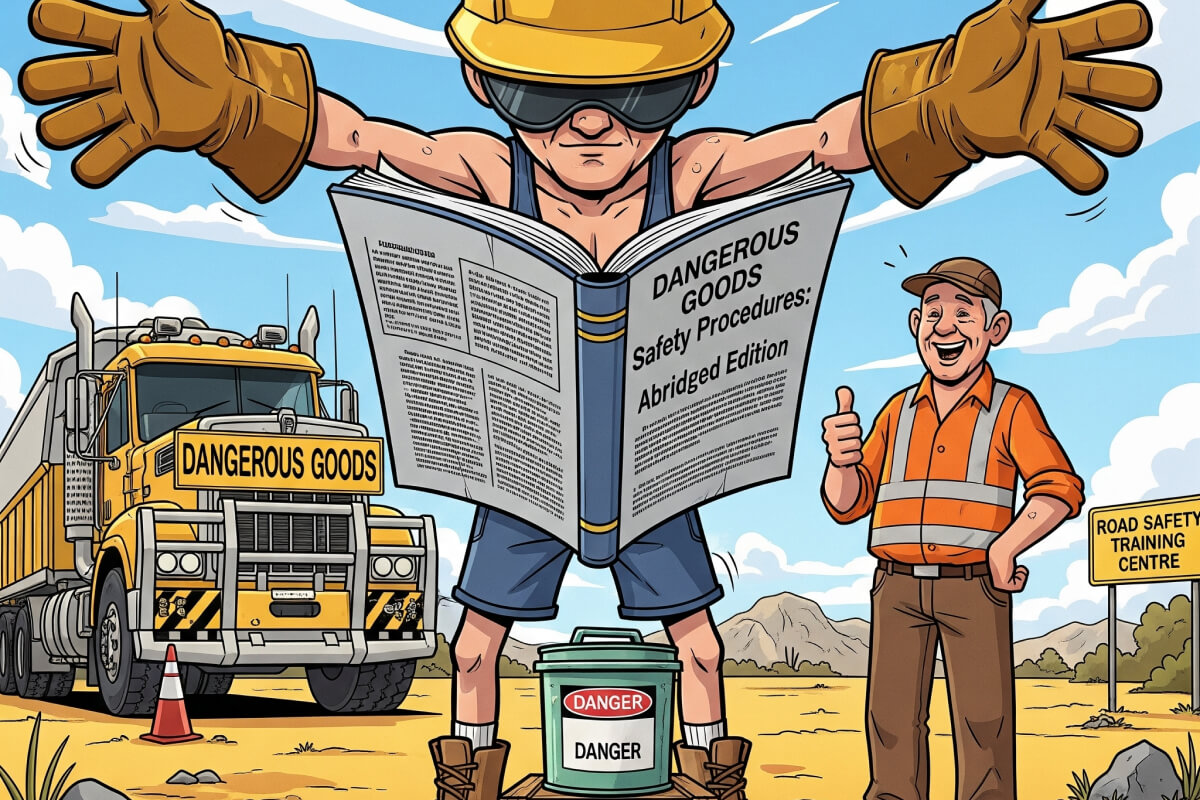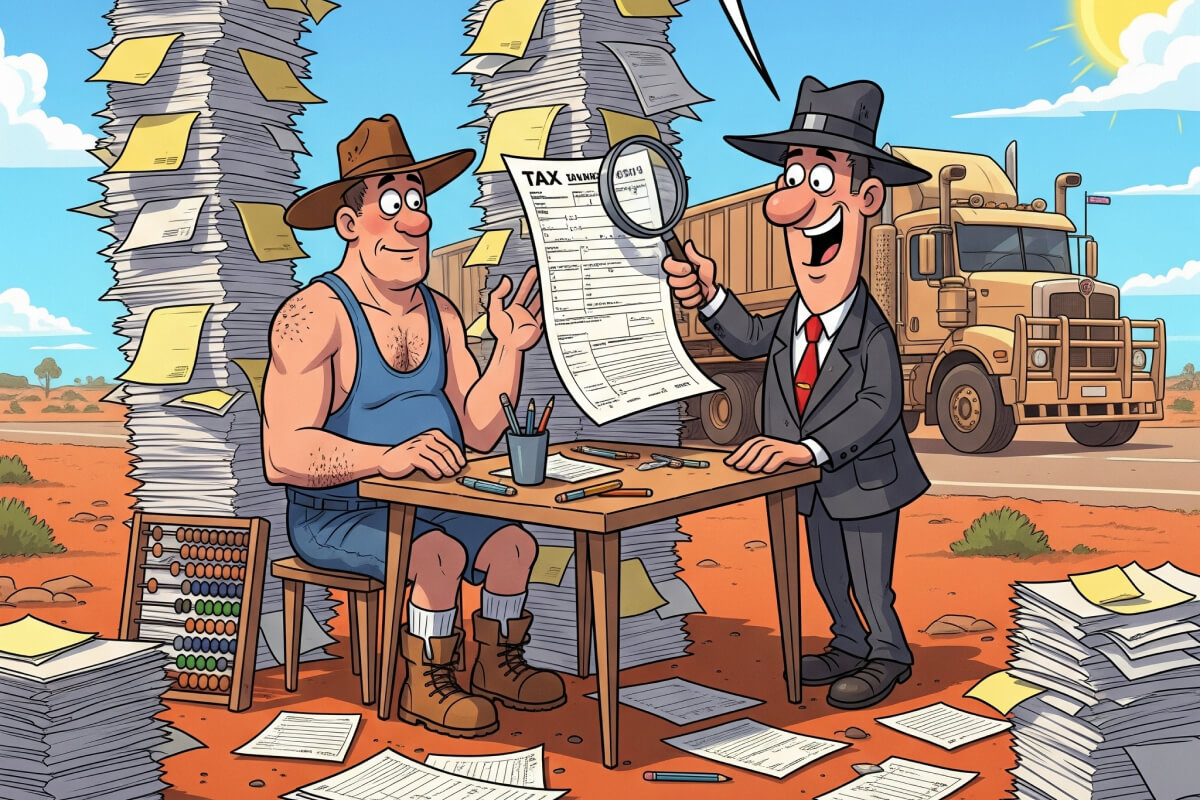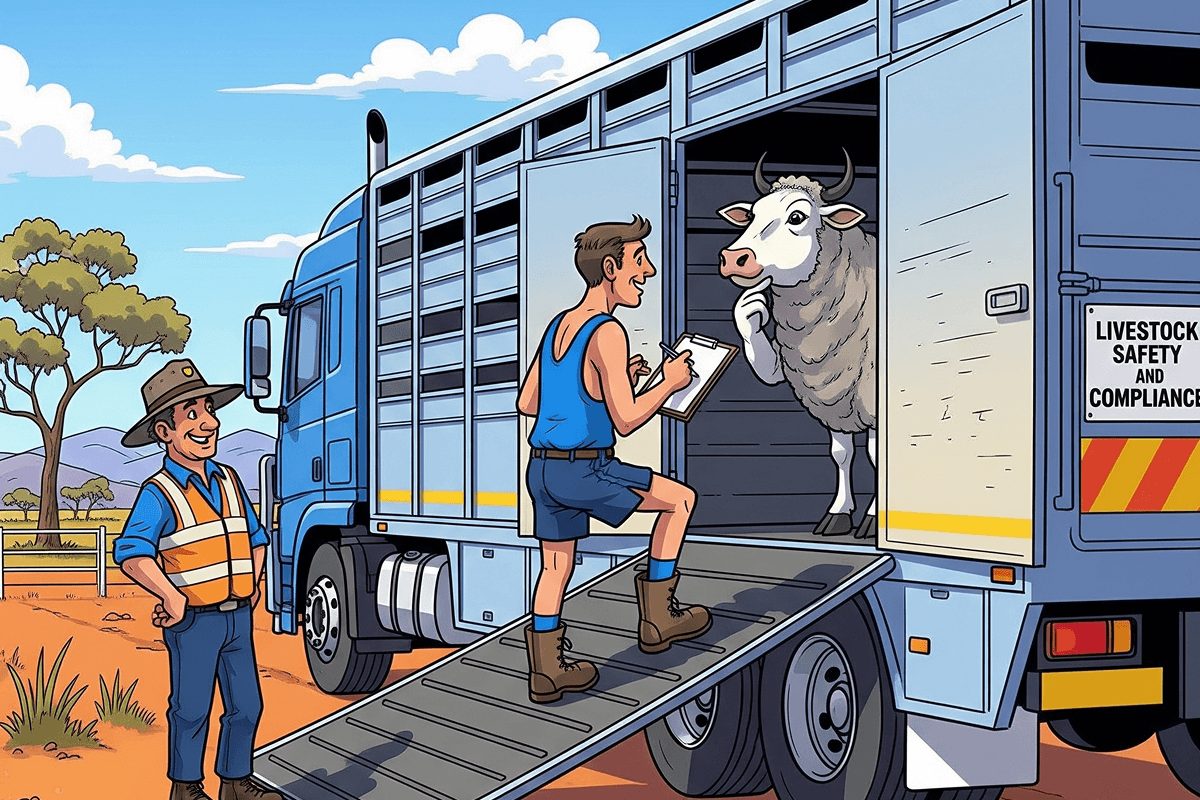
As the Head of Industry Engagement and Customer Success at Hubfleet, I’m always looking for ways to share insights and best practices from the heavy vehicle transport sector. That’s why I’m incredibly proud of our podcast, Risky Business, which I co-host with Craig Forsyth on Big Rig Radio.
We were recently in Shepparton for the LRTAV conference, and it was a fantastic opportunity to record our latest episode, diving deep into the realities of compliance, safety, and survival in the transport industry.
For this special episode, we were fortunate to host two brilliant guests: Anthony Boyle, the Executive Director of the Australian Livestock and Rural Transport Association (ALRTA), and Adam Gibson, Transport Research Manager at NTI, a lead analyst at NTARC, and an NRSPP partner via MUARC. Our focus for the evening was squarely on safety and compliance in the livestock and rural transport sector.
You can listen to the full episode here:
| Listen to the full episode on | ||
| Spotify | Soundcloud | Apple Podcast |
For those who don’t have time to listen to the full episode, here’s an overview below of what we covered:
The Victorian High Productivity Livestock Vehicle (HPLV) Accreditation Scheme
Anthony provided an insightful overview of this groundbreaking scheme, which was purpose-built for livestock transport. It successfully navigates the complexities of the Performance-Based Standards (PBS) system, particularly concerning rollover stability and fragmentation.
The HPLV scheme allows for higher productivity vehicles like A-Doubles, B-Triples (up to 36.5m), and AB-Triples (up to 42m). We discussed the rigorous accreditation process, which requires specific vehicle specifications (including ADR 80/02 emissions compliance, engine power ≥ 410kW, and road-friendly suspension), ABS or load proportioning brakes, NHVAS Maintenance accreditation, and telematics systems like RIM or TMA. Crucially, it also mandates animal welfare compliance and near-miss reporting.
This scheme is a testament to what an association can achieve in driving real, positive change for its members. But as we discussed, these initiatives rely on operators being able to demonstrate compliance in a structured way whether that’s fatigue management, maintenance management, or mass management compliance. That’s where digital platforms like Hubfleet play a vital role, giving operators the ability to capture and produce the evidence needed for accreditation and audits.
National Reform Agenda
Anthony also highlighted ALRTA’s Gate to Plate white paper, a strategic document aimed at national reform in the industry. This vision includes a Six-Star Trucking Model covering safety, productivity, environment, driver welfare, and animal welfare, alongside calls for better biosecurity and truck wash infrastructure, resilient freight corridors, a rural driver academy, and a freight-focused policy lead.
It’s clear that true productivity encompasses much more than just operational efficiency; it fundamentally includes safety and improved working conditions for our drivers. Increasingly, reforms are pointing to the need for a structured, auditable safety management system. Whether it’s fatigue, maintenance, or incident reporting, “if it isn’t documented, it didn’t happen” and digital tools make that documentation simple and reliable.
The Workforce Crisis
We delved into the alarming statistics surrounding the transport workforce, with half of truck drivers aged 55 or older, and a significant 21% expected to retire by 2029. This underlines the urgent need for a national training and licensing pipeline.
We discussed the importance of recognising and valuing the unique skill sets of rural drivers, including the potential for micro-credentials and formalised on-the-job training, to make the industry more attractive to a new generation, including more women.
For new entrants, technology is part of the answer. Systems like Hubfleet reduce the mountains of paperwork and make compliance processes intuitive and user-friendly. That’s not only a time saver for existing operators it also makes the industry less intimidating for younger drivers stepping in.
Expert Insights on Rollovers and Hill Descents
Adam Gibson brought his wealth of data and research expertise to the conversation, particularly on Single Vehicle Untripped Rollovers (SVUROs), which accounted for 44% of serious livestock crashes in 2022. These aren’t just ‘accidents’; they’re often predictable events caused by cornering, load shift, and vehicle dynamics, affecting even experienced drivers.
Adam stressed the crucial role of electronic stability control (ESC) as part of smart braking packages. He also detailed his work on Hill Descent Safety, where most crashes occur before the hill, and dynamic livestock loads significantly increase rollover risk. His work, supported by NRSPP, is developing vital resources like toolbox talks to promote “slow and low” downhill strategies and highlighting the need for better data on steep descents across our road network.
Insights like these highlight why integrated safety management from vehicle technology through to driver fatigue monitoring and maintenance oversight is so important. The risks are real, and without structured systems, operators are left exposed.
Closing
It was a truly engaging discussion, emphasising that by focusing on better equipment, robust safety protocols, effective training, and national reform, we can work towards a safer, more productive, and more attractive transport industry for everyone.
At Hubfleet, our role is to make this shift to structured compliance practical. Whether it’s fatigue management, maintenance management, mass management compliance, or a full safety management system, we’re helping operators put in place the evidence regulators and customers expect without drowning in paperwork.
You can even sign up for a free 14-day trial to see how simple compliance can be.



